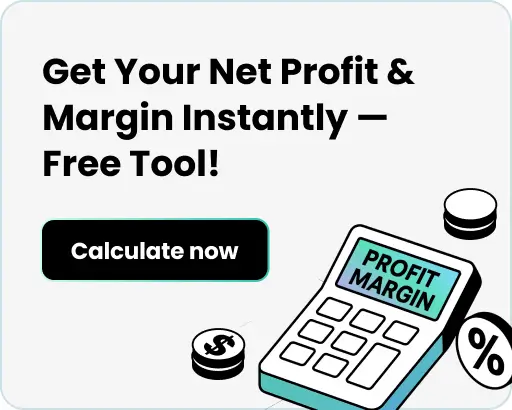Multi-Channel Attribution: An Easy Guide for Merchants (2025)

Multi-channel attribution is the process of analyzing and assigning value to different touchpoints a customer interacts with before making a purchase. In today’s digital landscape, 73% of consumers engage with brands across multiple channels such as social media, paid ads, email marketing, and organic search before completing a transaction.
It’s not impossible to detect which touchpoint is more important than the other. With multi-channel attribution, you'll be able to track your customer’s journey across multiple touchpoints and gain valuable insights into which channels are driving conversions.
In this article, we will explore all the essential aspects of multi channel attribution.
Why Does Multi-Channel Attribution Matter?
For e-commerce merchants, multi-channel attribution is essential for optimizing marketing spend and improving customer acquisition strategies. Here’s why it matters:
- Better Budget Allocation: Identify the most effective channels and allocate marketing budgets accordingly.
- Enhanced Customer Insights: Understand how customers interact with different marketing touchpoints before purchasing.
- Higher ROI: Optimize campaigns to improve conversion rates and profitability.
- Data-Driven Decision Making: Base marketing strategies on accurate data rather than assumptions.
What is The Difference Between Multi Channel Attribution and Multi-touch Attribution?
- Multi-channel attribution looks at how different marketing channels—like email, social media, and paid ads—contribute to sales. It helps you see which channels are most effective in driving conversions.
- Multi-touch attribution goes deeper by analyzing the specific interactions (or touchpoints) within those channels. For example, in the social media channel, touchpoints could be a paid ad, an organic post, or a video. This helps you understand which specific actions influence a customer’s decision to buy.
In short, multi-channel attribution shows which channels work best, while multi-touch attribution reveals which individual interactions drive results. To learn more, check out our detailed guide on multi-touch attribution.
What Are The Different Types Of Multi Channel Attribution Models?
Multi-channel attribution models help you determine which marketing channels contribute to conversions. The most common models include:
- Single-Touch Attribution Models (Credit goes to one channel)
- Last-Click Attribution
- First-Click Attribution
- Multi-Touch Attribution Models (Credit is distributed across multiple channels)
- Linear Attribution
- Time Decay Attribution
- Position-Based Attribution
- Data-Driven Attribution
Let’s explore how each model works!
1. Last click attribution
Last click attribution is the simplest multi channel attribution model. This model assigns 100% of the credit to the last channel a customer interacted with before making a purchase.
Example: A customer sees a Facebook ad, then visits your website, and finally buys after clicking a Google search ad. The last-click model would credit the conversion entirely to Google Search, ignoring the influence of the Facebook ad.
Pro: Simple to track and implement.
Con: Ignore earlier touchpoints that influenced the decision.
2. First click attribution
First click attribution is another simple multi channel attribution model. This model assigns 100% of the credit to the first channel a customer interacted with, regardless of other steps in their journey.
Example: If a customer first clicks on a Facebook ad, later visits your website through Google Search, and then makes a purchase, the first-click model would credit Facebook for the conversion.
Pro: Helps identify channels that introduce customers to your brand.
Con: Ignores the role of later interactions in converting the customer.
3. Linear Attribution
The linear attribution model is another straightforward way to assign credit across multiple marketing channels. This model spreads the credit equally across all the channels a customer interacted with before purchasing.
Example: If a customer engages with Facebook, Google Search, and Email before buying, each channel receives 33% of the credit.
Pro: A fairer way to recognize all channels.
Con: Treats all interactions as equally important, which may not reflect reality.
4. Time Decay Attribution
Time decay attribution is an advanced model for measuring the impact of marketing channels. This model gives more credit to interactions that happened closer to the conversion, while earlier touchpoints get less weight.
Example: A customer sees a Facebook ad a month before buying, then clicks a Google ad a day before purchasing. The model might assign 80% credit to Google and 20% to Facebook.
Pro: Recognizes that later interactions usually have a stronger influence on conversions.
Con: May undervalue earlier touchpoints that contributed to brand awareness.
5. Position-Based Attribution (or U-Shaped Attribution Model)
Position-based attribution (or U-Shaped Attribution Model) is a multi channel attribution model that takes into account both the timing and order of customer interactions with marketing channels. This model gives the most credit to the first and last interactions while distributing the rest among middle touchpoints. By giving more weight to the first and last touchpoints, position-based attribution can help you identify which channels are effective at both attracting new customers and encouraging repeat purchases.
Example: If a customer interacts with four channels before buying, this model might assign:
- 40% credit to the first touchpoint
- 40% credit to the last touchpoint
- 20% credit shared between the middle two touchpoints
Pro: Balances the importance of both awareness and conversion touchpoints.
Con: Still makes assumptions about the importance of middle interactions.
6. Data-driven attribution
Data-driven attribution uses machine learning to measure your marketing impact and customizes your attribution strategy based on your own data. It learns how your customers interact with your campaigns and credits different channels accordingly.
Example: If historical data shows that customers who engage with Instagram ads before clicking Google Search tend to convert at higher rates, the model will automatically assign more credit to Instagram.
Pro: The most accurate and customized model.
Con: Requires advanced tracking, machine learning tools, and more data.
Which Multi Channel Attribution Model is Right For You?
There’s no one-size-fits-all approach. The best model depends on your business goals:
- If you want simplicity → Last-Click or First-Click
- If you want a fairer view → Linear
- If you want more accuracy → Time Decay or Position-Based
- If you want data-driven insights → Data-driven Attribution
No matter which model you choose, using multi-channel attribution helps you understand your customer journey and optimize your marketing strategy effectively.
Once you've selected the right model, use our Profit Margin Calculator to assess how your marketing efforts translate into actual profitability.
Common Challenges With Multi Channel Attribution (+ How To Overcome Them)
Multi-channel attribution helps businesses understand which marketing efforts drive conversions. However, several challenges can make it difficult to implement effectively. Here’s how to address them:
1. Misattribution of Conversions
One of the biggest challenges is incorrectly crediting a conversion to the wrong marketing channel. Here's an example of how misattribution can happen:
- A customer sees a Facebook ad for your product.
- They visit your website, add the product to their cart, but don’t complete the purchase.
- The next day, they see a Google ad, click it, and make a purchase.
If you’re using a last-click attribution model, the conversion will be credited entirely to Google, even though Facebook played a role in influencing the decision.
2. New Data Regulations
New regulations like GDPR (General Data Protection Regulation) and CCPA (California Consumer Privacy Act) have made it harder to collect and use customer data. This can limit how accurately you track and attribute conversions.
The Best Multi Channel Attribution Tools
There are some different multi channel attribution tools available, each with its strengths and weaknesses. Here are a few of the best tools:
1. TrueProfit – The Best Attribution Tool for E-commerce
TrueProfit is a data-driven attribution tool designed specifically for e-commerce businesses. It provides real-time profit tracking while helping you understand how different marketing channels contribute to conversions. Key features including:
- Multi-touch attribution: Get insights into all customer touchpoints, from first click to final purchase.
Real-time profit tracking: Unlike other tools that focus solely on revenue, TrueProfit calculates your actual profit after expenses. - Seamless integrations: Connects with Shopify, Facebook Ads, Google Ads, TikTok Ads, and more.
- Easy-to-use dashboard: No complex setup—just clear, actionable data.
Best for: Shopify merchants and e-commerce brands looking to maximize their marketing ROI with accurate profit attribution.
2. Google Attribution
Google Attribution is a free multi channel attribution tool that offers a variety of features, including:
- Data integration: integrates with many of marketing platforms, including Google Analytics, Facebook Ads, and Twitter Ads.
- Detailed reports: generates reports for you to gain insights into the performance of your marketing channels.
- Free to use: available to all advertisers for free
3. Adjust
Adjust is a mobile multi channel attribution tool that specializes in tracking mobile app conversions. Adjust offers a variety of features, including:
- Data integration: integrates with Google Analytics, Facebook Ads, Salesforce, etc.
- Powerful: allow you to see which ads led to which conversions, down to the ad creatives level.
- Safe: have an anti-fraud system to ensure your data and budget is safe and never misrepresented.
4. HubSpot Attribution
HubSpot Attribution is a comprehensive multi channel attribution tool that offers a variety of features, including:
- Data integration: integrates with a variety of marketing platforms like Google Analytics, Facebook Ads, and Salesforce.
- Attribution models: offers a variety of attribution models, including linear, time decay, position-based attribution, etc.
- Reporting: provides detailed reports that show you how your marketing channels are performing.
So, there you have it! Multi channel attribution is a powerful tool that can help you understand how your customers interact with your marketing campaigns. By choosing the right multi channel attribution tool and using it effectively, you can get the insights you need to improve your marketing campaigns and achieve your business goals.
But don't just take our word for it! Try out a few different multi channel attribution tools and see for yourself how they can help you. And if you're not sure where to start, check out the resources we've mentioned in this article!
Tracy is a senior content executive at TrueProfit – specializing in helping eCommerce businesses scale profitably through content. She has over 4 years of experience in eCommerce and digital marketing editorial writing. She develops high-impact content that helps thousands of Shopify merchants make data-driven, profit-focused decisions.





 Shopify profits
Shopify profits









